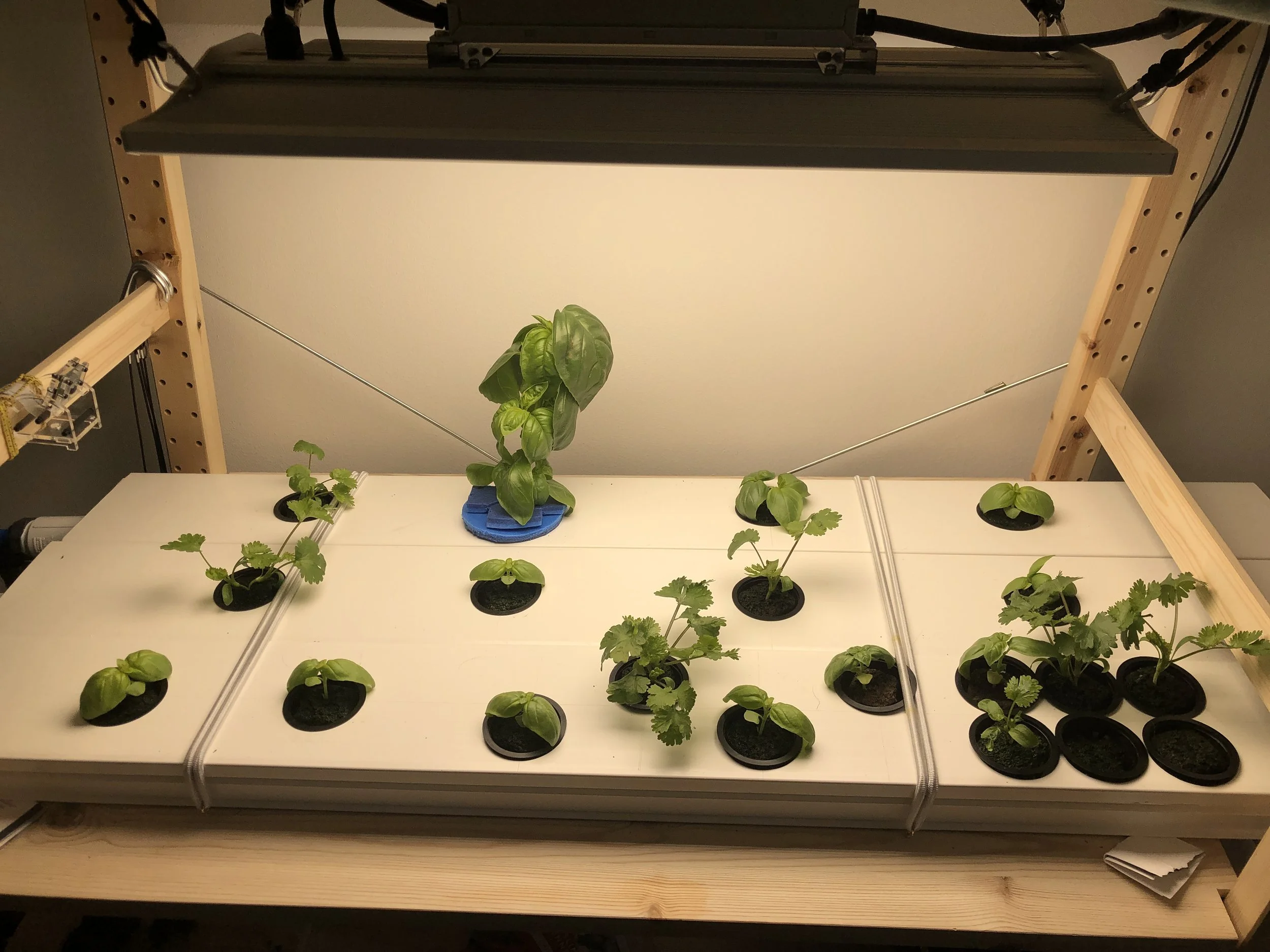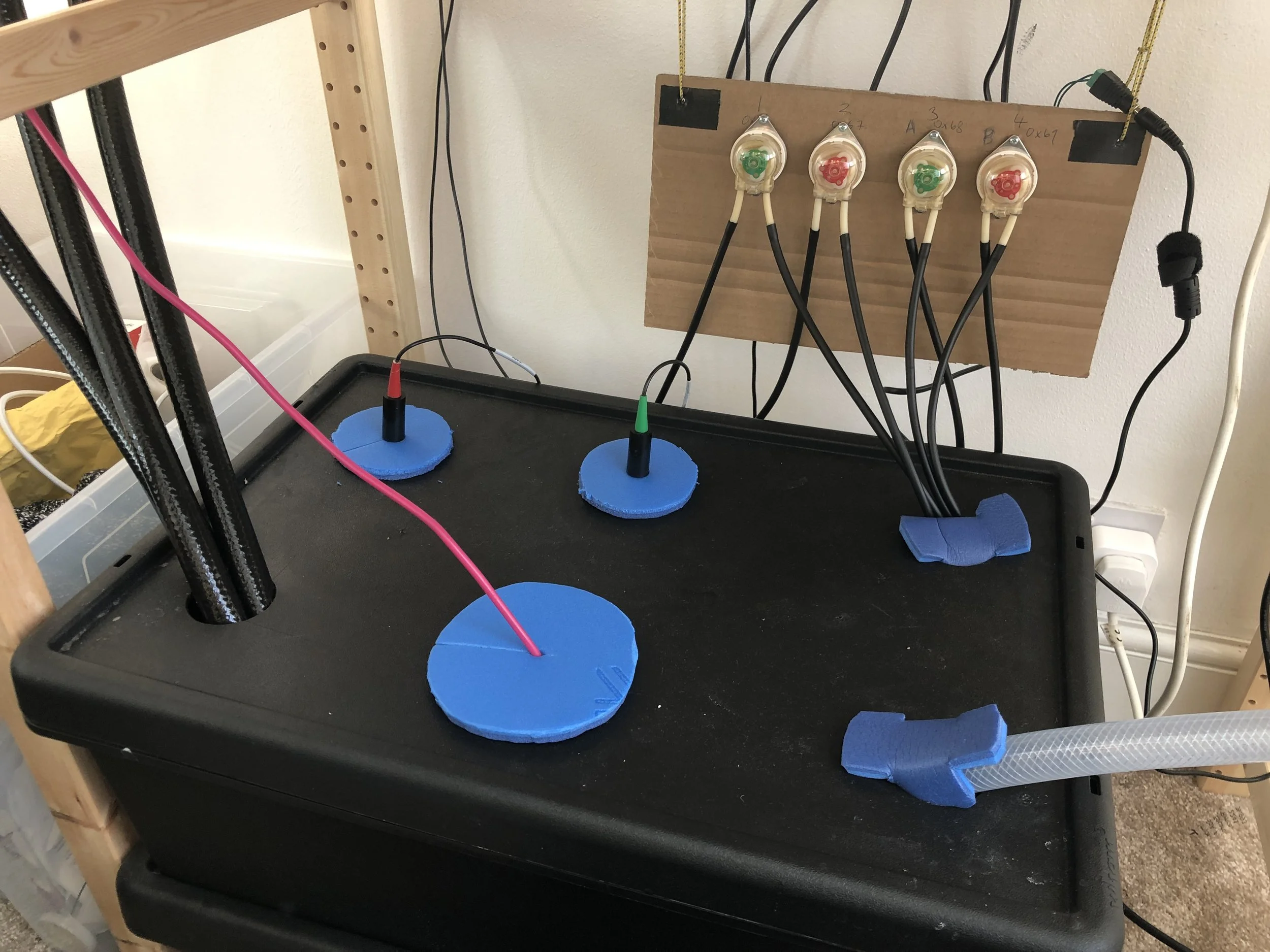Most of the main components are in place and working well in the automated system. After several careful trials pumping water through the system and fixing various leaks, I was able to let it run unsupervised without worrying that I would come back to a soaked floor.
Various sensors were added - for nutrient solution temperature, electrical conductivity (EC - a proxy for nutrient concentration), and pH. For the room I added sensors for air temperature, humidity, and carbon dioxide concentration.
The control system for the nutrient solution was completed, with 4 peristaltic pumps wired in and programmed to “dose” the solution, based on measurements from the above sensors, to keep the EC and pH within the optimal range for the plants. At the moment I am keeping the EC at between 1.5 and 1.8, and the pH between 5.5 and 6.0
Nutrient reservoir, with sensors and dosing pumps
The image above shows the black nutrient solution reservoir. The transparent PVC hose to the right is the output from the pump to the 3 NFT channels, and the 3 black hoses re-entering the reservoir at the left are the returns from the channels. The red wire in the centre is to the temperature probe. The black sensor with red top at the back is the pH sensor (Atlas Scientific), the green topped sensor is for EC (also Atlas Scientific), and the small black tubes in the top right enter the reservoir from the 4 peristaltic pumps to add nutrients and to raise and lower the pH as necessary.
The whole system
Early results are pretty encouraging. I am using the 200W lights below full power to see if I can get good results without using enormous amounts of energy. Ultimately the point of the whole experiment is to find out the actual costs (energy, time, funds) that are required for the actual yields (high quality culinary plants), and to decide if this is an eco-friendly option to pursue at a larger scale.
The basil and coriander are both growing vigorously and have very healthy looking white roots. There are a many questions that I want to answer, a few of which are:
Why do my basil plants tend to produce very large leaves that become fairly tough and waxy after the initial few weeks?
How long will the system run before I need to replace the nutrient solution and clean the whole system?
How can i make sure that algae and microbial / fungal pests don’t cause problems in the future?
Can I grow enough coriander and basil to make it worthwhile for regular cooking?
What other plants can I successfully grow in the system?
How much electrical energy is required per plant to grow to maturity?
There are many other aspects of the build that I have not even started to cover, such as the raspberry pi and how I have wired up the sensors. Also the use of Kyle Gabriel’s Mycodo software to manage the inputs, outputs, and control aspects of the system and interface everything to a web browser. I’ll cover these in future posts.


